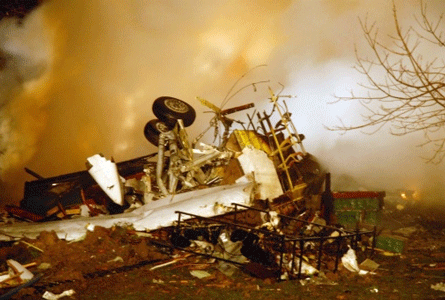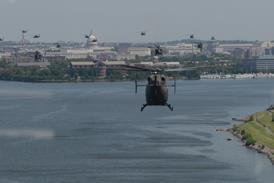Ian Sheppard/Woodford

While Boeing struggles to stay profitable producing hundreds of airliners a year, British Aerospace Regional Aircraft (BARA) faces a different challenge - how to make money producing a handful of aircraft each year.
Based at Woodford, near Manchester, BARA assembles the Avro RJ regional jet, but only builds the forward fuselage. Other parts are produced at BAe sites in Filton (centre fuselage), Chadderton (rear fuselage), Brough (fin) and Prestwick (wing).
The main challenge for final assembly is advising Filton of the fuselage length, which varies for each model. "We have to get the mix right," says BAe, which admits that this has been "easy" for the last two or three years, given the RJ's strong orderbook. Filton's lead-time is "around a year", and 15 weeks for a "firm" decision on length (RJ85 or RJ100).
Limiting factors
BARA has driven down assembly times only to see the inflexibility of the supply chain emerge as the limiting factor. Jonathan Neale, product process group director, says that supply chains in the industry have been unable to respond flexibly enough. "It's endemic in the aerospace industry, as they're still generically not customer led," says Neale, who believes manufacturers "-need agility to follow customers".
To avoid Boeing's recent woes, where production was stopped to let the supply chain catch up, BARA believes that it must have a core capability supplemented by a temporary workforce and subcontractors.
BARA has removed a lot of non-value-added work "-to protect cycle times", says Neale, but has identified more such work. Cycle time for final assembly and interior completion was 29 weeks in 1992. Now it is 11, and soon Woodford will bring it down to nine.
There are now fewer aircraft in assembly at any one time at Woodford, with the number of basic assembly bays down to three and a large area of the building given over to Avrotec, the company's maintenance offshoot.
Through its supplier-partnership programme, BARA is looking at "decision fences" (how late decisions can be made), while moving over to flexible scheduling. The latter, which is "not common practice", says Neale, involves three windows of 12 weeks: fixed, firm (with variable delivery time) and flexible (with variable delivery time and quantity). This has led to the nine-week cycle time, although BAe is "-unlikely to release this to the balance sheet until the end of next year" to protect customers.
There has been a 32% increase in load through the factory this year, with BARA aiming for at least a 15% cost reduction (supported by a 9% year-on-year productivity improvement) - the UK industry needs a 7-8% productivity increase just to afford the pay rises, says Neale.
In the last three years, Woodford has seen inventory-supporting production fall to 30% of previous levels, with work in progress down from £150 million ($245 million) to £45 million, releasing space and requiring a more "entrepreneurial" approach.
Accompanying the cut in work in progress has been "value engineering", with delivery as late as possible of high-priced items such as engines and avionics, "-so you don't have to pay for them until you've got the money from the customer", Neale says. BARAnow adds £5 million-worth of parts to each aircraft in the final five weeks, which, for 23 aircraft a year, equates to significant interest savings on inventory.
ROOM FORIMPROVEMENT
Karl Colyer, general manager of aircraft completions, is bringing to bear on RJ production his experience in the automotive sector. He is scathing of the aerospace industry, describing it as "between 10 and 15 years behind" the automotive sector. One instance is assembly routines allowing self-inspection - for example, one worker places a bolt and another puts the nut on - only recently introduced at BARA. "We've still got a long way to go here," says Colyer.
A big advantage of having moved from four assembly bays to three, and of plans to move to just two when the nine-week cycle kicks in, is that "experts are less diluted" on the shop floor, says Colyer. Leanness has led to "initiative overload", he adds, and a workforce initially uncomfortable with wide areas of free space.
There is still "-too much attention to symptoms and not causes. We're good at firefighting", says Colyer, but BARA"-now under- stands the severity and frequency of problems", each of which is given a risk number and a "champion". Colyer says: "It's the discipline of doing it-the hardest thing is to find a standard way of doing things and then to focus."
BARA is now focusing on combining the basic assembly area with the completion area, which is in a separate hall. The 11-week cycle time is divided 4:7, with the proposed improvements cutting a week from each phase.
Improvements will include working more as a team, removing "gaps or duplication" in communication, and moving more operations to the "best point of fit". This will give the two week "step change", which Colyer admits will probably be the "-last big change we can do" with the current aircraft. He expects (and prefers) to do things incrementally after that, improving the "hundreds of small things".
Source: Flight International























